Telescope Galaxies
- All
- News
- Videos
-

Flattened Dark Matter May Explain Mysterious Gamma-Ray Glow at Milky Way’s Core, Study Finds
- Sunday October 26, 2025
- Written by Gadgets 360 Staff
Dark matter near the Milky Way’s center appears flattened, not spherical, according to new simulations. The discovery may explain a puzzling gamma-ray glow long observed by NASA’s Fermi telescope, reigniting theories that dark matter collisions produce high-energy radiation in the galaxy’s core
-
 www.gadgets360.com
www.gadgets360.com
-

James Webb Telescope Finds Early Universe Galaxies Were More Chaotic Than We Thought
- Thursday October 23, 2025
- Written by Gadgets 360 Staff
The James Webb Space Telescope has revealed that galaxies in the early universe were far more chaotic and unstable than once believed. A new study shows that gas turbulence and intense star formation disrupted young galaxies, reshaping scientists’ understanding of how galaxies evolved into the structured systems seen today.
-
 www.gadgets360.com
www.gadgets360.com
-

James Webb Telescope Uncovers the Turbulent Birth of the First Galaxies
- Saturday October 25, 2025
- Written by Gadgets 360 Staff
Using JWST data, astronomers analyzed more than 250 galaxies from the universe’s first 1.5 billion years and found most were chaotic, with gas swirling in all directions. Only a few showed early signs of ordered rotation. The findings reveal how intense star formation and gravitational turbulence gave way to stability, transforming the early univ...
-
 www.gadgets360.com
www.gadgets360.com
-

James Webb Telescope Spots Evidence of a Black Hole Carving a Massive Scar Through a Galaxy
- Thursday October 9, 2025
- Written by Gadgets 360 Staff
Astronomers using JWST and ALMA discovered a 20,000-light-year-long contrail in galaxy NGC 3627. Scientists believe it was carved by a massive black hole traveling through the galactic disk, leaving behind a turbulent scar of dust and gas that may offer new clues to galaxy evolution.
-
 www.gadgets360.com
www.gadgets360.com
-

JWST Reveals Stunning New Details About M87’s Supermassive Black Hole Jet
- Saturday October 4, 2025
- Written by Gadgets 360 Staff
Recent images captured by the James Webb Space Telescope (JWST) are the clearest ever pictures of the jet arriving from the massive black hole in the galaxy named Messier 87 (M87). There are clear details in the image shot by the telescope, which show the change of brightness, shape and the jet that is usually in disguise. As per scientists, this d...
-
 www.gadgets360.com
www.gadgets360.com
-

Rubin Observatory Adopts New AI Algorithm to Enhance Cosmic Imaging
- Tuesday September 30, 2025
- Written by Gadgets 360 Staff
Scientists have developed ImageMM, an algorithm tested on Hawaii’s Subaru Telescope and soon to be used at the Rubin Observatory. The system reduces atmospheric blur, producing sharper images for studying galaxies and dark matter. Researchers believe the technique could make ground-based astronomy nearly as precise as space telescopes
-
 www.gadgets360.com
www.gadgets360.com
-

Flagship 2, The Largest-Ever Simulation Of Universe With 3.4 Billion Galaxies, Released
- Sunday September 28, 2025
- Science | Edited by Ritu Singh
The Flagship 2 simulation, developed using an algorithm by University of Zurich astrophysicist Joachim Stadel, is the largest and most detailed universe simulation ever created.
-
 www.ndtv.com
www.ndtv.com
-

White Dwarf Gobbles Up Nitrogen-Rich Ices of Pluto-Like World
- Friday September 26, 2025
- World News | Reuters
Astronomers have observed a white dwarf, a highly compact stellar ember, that appears to have gobbled up an icy world akin to dwarf planet Pluto, a finding with implications regarding the likelihood of habitable planets beyond our solar system
-
 www.ndtv.com
www.ndtv.com
-

Tiny Red Dots Spotted By NASA’s James Webb Telescope Could Be Black Hole Stars
- Thursday September 25, 2025
- Written by Gadgets 360 Staff
NASA’s James Webb Space Telescope revealed mysterious “little red dots” that seem too bright and mature for their age. A new study suggests they may be black hole stars—giant hydrogen spheres powered by black holes—helping explain the rapid growth of early supermassive black holes.
-
 www.gadgets360.com
www.gadgets360.com
-

NASA’s James Webb Space Telescope Spots Rare Quintet of Galaxies From the Early Universe
- Thursday September 4, 2025
- Written by Gadgets 360 Staff
Astronomers using JWST and Hubble have discovered JWST’s Quintet, a system of at least five merging galaxies just 800 million years after the Big Bang. This rare find shows how galaxies grew rapidly in the early universe and may explain how some became inactive so soon.
-
 www.gadgets360.com
www.gadgets360.com
-

Astronomers Detect RBFLOAT, Brightest Fast Radio Burst Ever Observed
- Monday August 25, 2025
- Written by Gadgets 360 Staff
An international team of astronomers has detected RBFLOAT, the brightest fast radio burst (FRB) ever recorded, just 130 million light-years away in Ursa Major. Detected by CHIME in March 2025, the powerful radio flash was traced to galaxy NGC-4141. Follow-up imaging with the James Webb Space Telescope revealed a faint stellar source near the burst,...
-
 www.gadgets360.com
www.gadgets360.com
-

Earendel: JWST Suggests the Most Distant Star May Be a Star Cluster
- Thursday August 21, 2025
- Written by Gadgets 360 Staff
Earendel, the farthest object ever seen, was first thought to be a single massive star from the early universe. New findings from JWST suggest it may instead be a star cluster, with many stars grouped together. Scientists used gravitational lensing to spot Earendel, which made its light appear thousands of times brighter.
-
 www.gadgets360.com
www.gadgets360.com
-

Twisted Jet Confirms Most Extreme Binary Black Hole System in the Universe
- Sunday August 10, 2025
- Written by Gadgets 360 Staff
Astronomers have confirmed that the blazar OJ 287 hosts the most extreme binary black hole system ever found. Using a global radio telescope array, they captured an ultra-sharp image showing a dramatically bent jet—evidence of two supermassive black holes locked in orbit. The system’s 12-year flare cycle and jet twists match predictions of a sm...
-
 www.gadgets360.com
www.gadgets360.com
-

NASA Missions Uncover a Diverse Galaxy of Super-Earths, Raising New Questions About Planetary Evolution
- Thursday August 14, 2025
- Written by Gadgets 360 Staff
Super-Earths are among the most common planets in the galaxy, yet none exist in our solar system. Larger than Earth but smaller than Neptune, they range from ocean-covered worlds to scorched, atmosphere-less rocks. Some orbit within habitable zones, making them prime candidates for life. NASA’s Kepler and TESS missions, along with upcoming telesc...
-
 www.gadgets360.com
www.gadgets360.com
-

Flattened Dark Matter May Explain Mysterious Gamma-Ray Glow at Milky Way’s Core, Study Finds
- Sunday October 26, 2025
- Written by Gadgets 360 Staff
Dark matter near the Milky Way’s center appears flattened, not spherical, according to new simulations. The discovery may explain a puzzling gamma-ray glow long observed by NASA’s Fermi telescope, reigniting theories that dark matter collisions produce high-energy radiation in the galaxy’s core
-
 www.gadgets360.com
www.gadgets360.com
-

James Webb Telescope Finds Early Universe Galaxies Were More Chaotic Than We Thought
- Thursday October 23, 2025
- Written by Gadgets 360 Staff
The James Webb Space Telescope has revealed that galaxies in the early universe were far more chaotic and unstable than once believed. A new study shows that gas turbulence and intense star formation disrupted young galaxies, reshaping scientists’ understanding of how galaxies evolved into the structured systems seen today.
-
 www.gadgets360.com
www.gadgets360.com
-

James Webb Telescope Uncovers the Turbulent Birth of the First Galaxies
- Saturday October 25, 2025
- Written by Gadgets 360 Staff
Using JWST data, astronomers analyzed more than 250 galaxies from the universe’s first 1.5 billion years and found most were chaotic, with gas swirling in all directions. Only a few showed early signs of ordered rotation. The findings reveal how intense star formation and gravitational turbulence gave way to stability, transforming the early univ...
-
 www.gadgets360.com
www.gadgets360.com
-

James Webb Telescope Spots Evidence of a Black Hole Carving a Massive Scar Through a Galaxy
- Thursday October 9, 2025
- Written by Gadgets 360 Staff
Astronomers using JWST and ALMA discovered a 20,000-light-year-long contrail in galaxy NGC 3627. Scientists believe it was carved by a massive black hole traveling through the galactic disk, leaving behind a turbulent scar of dust and gas that may offer new clues to galaxy evolution.
-
 www.gadgets360.com
www.gadgets360.com
-

JWST Reveals Stunning New Details About M87’s Supermassive Black Hole Jet
- Saturday October 4, 2025
- Written by Gadgets 360 Staff
Recent images captured by the James Webb Space Telescope (JWST) are the clearest ever pictures of the jet arriving from the massive black hole in the galaxy named Messier 87 (M87). There are clear details in the image shot by the telescope, which show the change of brightness, shape and the jet that is usually in disguise. As per scientists, this d...
-
 www.gadgets360.com
www.gadgets360.com
-

Rubin Observatory Adopts New AI Algorithm to Enhance Cosmic Imaging
- Tuesday September 30, 2025
- Written by Gadgets 360 Staff
Scientists have developed ImageMM, an algorithm tested on Hawaii’s Subaru Telescope and soon to be used at the Rubin Observatory. The system reduces atmospheric blur, producing sharper images for studying galaxies and dark matter. Researchers believe the technique could make ground-based astronomy nearly as precise as space telescopes
-
 www.gadgets360.com
www.gadgets360.com
-

Flagship 2, The Largest-Ever Simulation Of Universe With 3.4 Billion Galaxies, Released
- Sunday September 28, 2025
- Science | Edited by Ritu Singh
The Flagship 2 simulation, developed using an algorithm by University of Zurich astrophysicist Joachim Stadel, is the largest and most detailed universe simulation ever created.
-
 www.ndtv.com
www.ndtv.com
-

White Dwarf Gobbles Up Nitrogen-Rich Ices of Pluto-Like World
- Friday September 26, 2025
- World News | Reuters
Astronomers have observed a white dwarf, a highly compact stellar ember, that appears to have gobbled up an icy world akin to dwarf planet Pluto, a finding with implications regarding the likelihood of habitable planets beyond our solar system
-
 www.ndtv.com
www.ndtv.com
-

Tiny Red Dots Spotted By NASA’s James Webb Telescope Could Be Black Hole Stars
- Thursday September 25, 2025
- Written by Gadgets 360 Staff
NASA’s James Webb Space Telescope revealed mysterious “little red dots” that seem too bright and mature for their age. A new study suggests they may be black hole stars—giant hydrogen spheres powered by black holes—helping explain the rapid growth of early supermassive black holes.
-
 www.gadgets360.com
www.gadgets360.com
-

NASA’s James Webb Space Telescope Spots Rare Quintet of Galaxies From the Early Universe
- Thursday September 4, 2025
- Written by Gadgets 360 Staff
Astronomers using JWST and Hubble have discovered JWST’s Quintet, a system of at least five merging galaxies just 800 million years after the Big Bang. This rare find shows how galaxies grew rapidly in the early universe and may explain how some became inactive so soon.
-
 www.gadgets360.com
www.gadgets360.com
-

Astronomers Detect RBFLOAT, Brightest Fast Radio Burst Ever Observed
- Monday August 25, 2025
- Written by Gadgets 360 Staff
An international team of astronomers has detected RBFLOAT, the brightest fast radio burst (FRB) ever recorded, just 130 million light-years away in Ursa Major. Detected by CHIME in March 2025, the powerful radio flash was traced to galaxy NGC-4141. Follow-up imaging with the James Webb Space Telescope revealed a faint stellar source near the burst,...
-
 www.gadgets360.com
www.gadgets360.com
-

Earendel: JWST Suggests the Most Distant Star May Be a Star Cluster
- Thursday August 21, 2025
- Written by Gadgets 360 Staff
Earendel, the farthest object ever seen, was first thought to be a single massive star from the early universe. New findings from JWST suggest it may instead be a star cluster, with many stars grouped together. Scientists used gravitational lensing to spot Earendel, which made its light appear thousands of times brighter.
-
 www.gadgets360.com
www.gadgets360.com
-

Twisted Jet Confirms Most Extreme Binary Black Hole System in the Universe
- Sunday August 10, 2025
- Written by Gadgets 360 Staff
Astronomers have confirmed that the blazar OJ 287 hosts the most extreme binary black hole system ever found. Using a global radio telescope array, they captured an ultra-sharp image showing a dramatically bent jet—evidence of two supermassive black holes locked in orbit. The system’s 12-year flare cycle and jet twists match predictions of a sm...
-
 www.gadgets360.com
www.gadgets360.com
-

NASA Missions Uncover a Diverse Galaxy of Super-Earths, Raising New Questions About Planetary Evolution
- Thursday August 14, 2025
- Written by Gadgets 360 Staff
Super-Earths are among the most common planets in the galaxy, yet none exist in our solar system. Larger than Earth but smaller than Neptune, they range from ocean-covered worlds to scorched, atmosphere-less rocks. Some orbit within habitable zones, making them prime candidates for life. NASA’s Kepler and TESS missions, along with upcoming telesc...
-
 www.gadgets360.com
www.gadgets360.com

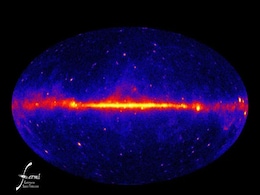
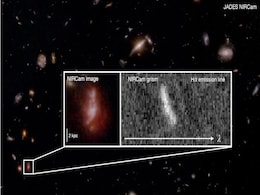

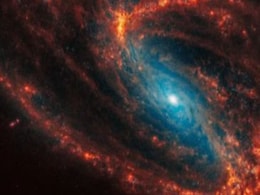
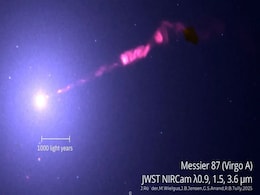
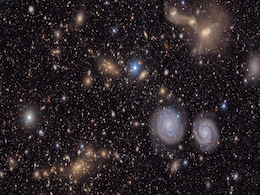

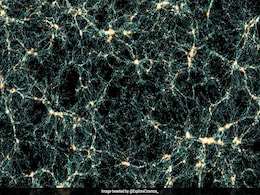

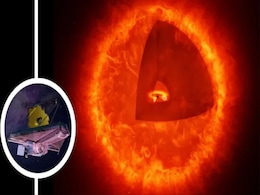





![Gadgets 360 With Technical Guruji: Did You Know? [April 6, 2024] Gadgets 360 With Technical Guruji: Did You Know? [April 6, 2024]](https://c.ndtvimg.com/2024-02/mpconh58_did-you-know_640x480_10_February_24.jpg?downsize=245:163)


